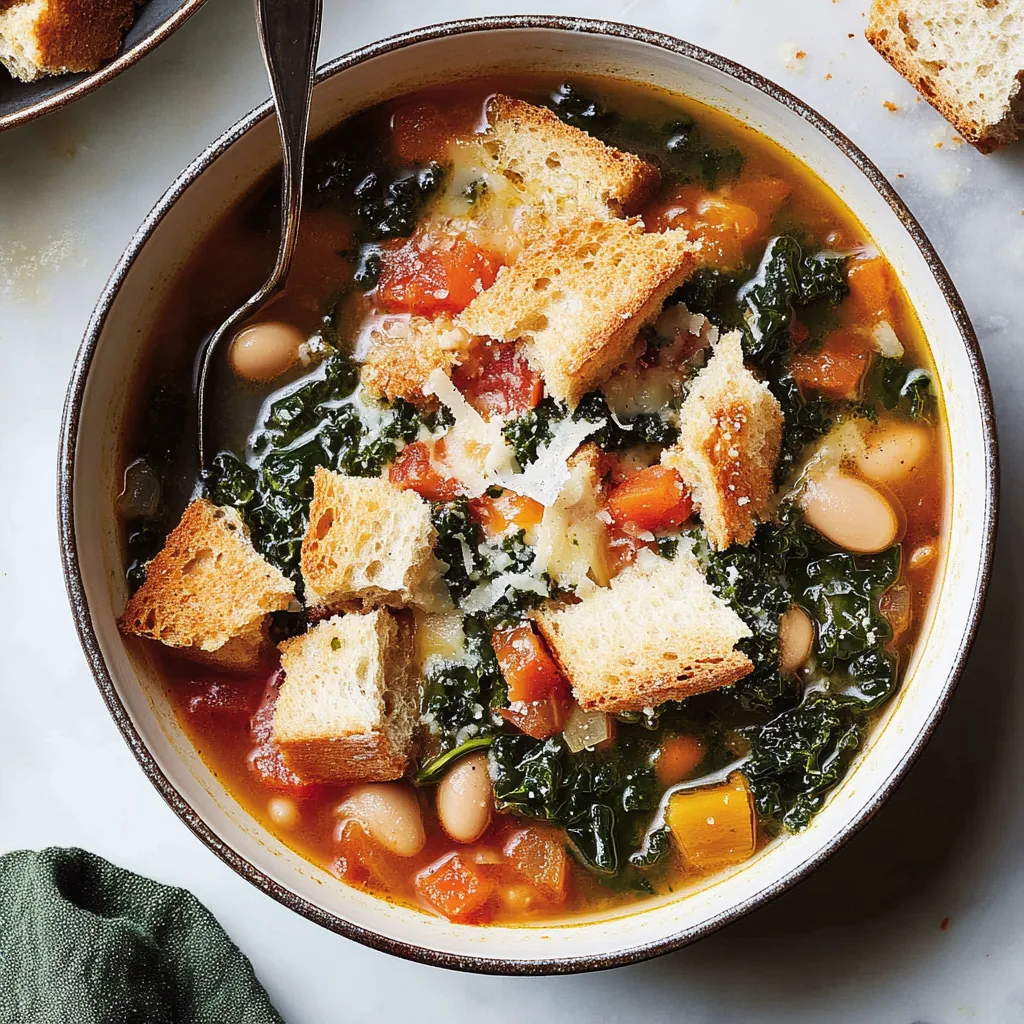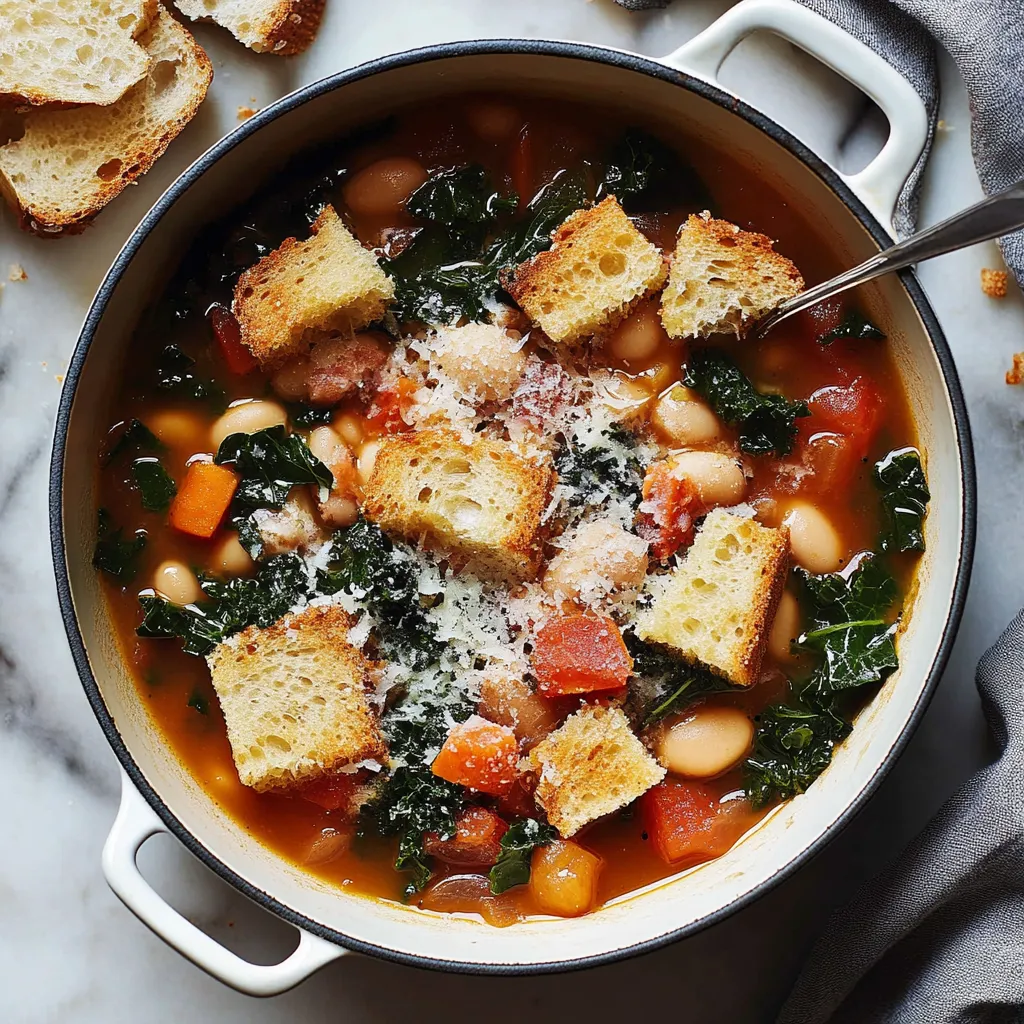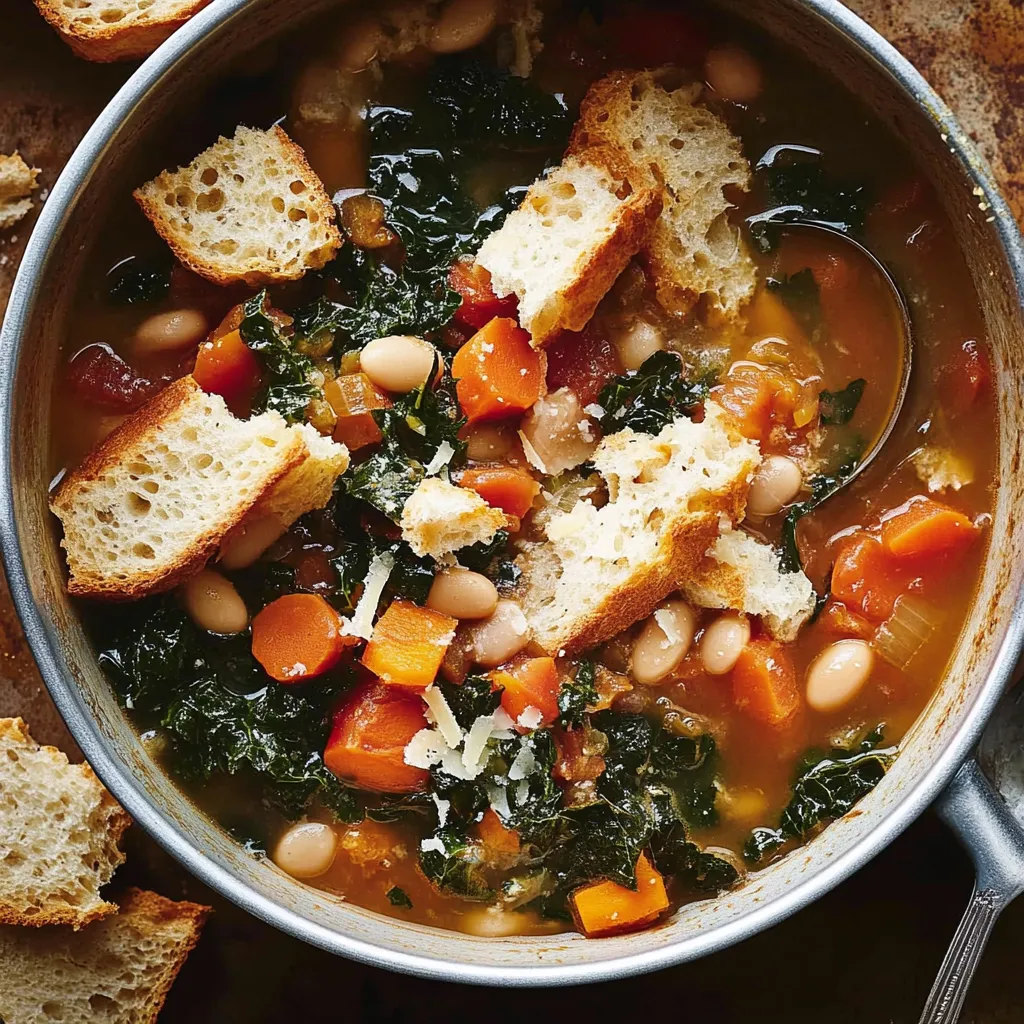 Pin it
Pin it
Ribollita, which means "reheated" in Italian, turns basic ingredients into a filling, comforting soup that showcases the heart of Tuscan country cooking. This smart dish shows how yesterday's bread and basic veggies can come together to make something amazing.
After diving into old-school Tuscan cooking methods, I've found that making true ribollita depends on slowly building up flavors and picking the freshest simple ingredients you can find.
Key Components
- Stale Bread: Rustic country loaf or sourdough
- Cannellini Beans: The classic white beans from Tuscany
- Tuscan Kale: Sometimes called cavolo nero
- Extra Virgin Olive Oil: Use the good stuff for cooking and finishing
- Rosemary Sprigs: Gives important fragrant flavors
- Cheese Rind: Makes the broth richer
- Diced Vegetables: For the flavor foundation
- Dry White Wine: Brings tang and balance
Step-by-Step Process
- Getting the Bread Ready (15 minutes):
- Slice bread into chunks about an inch big. Put them on a baking tray. Toast until they're completely dried out. Cool them down all the way. Keep aside till you need them.
- Making the Flavor Base (12-15 minutes):
- Warm olive oil in a heavy pot. Toss in finely chopped onion, carrot, and celery. Cook them low and slow until soft. Add a pinch of salt to help them sweat. Mix now and then to avoid any browning. Drop in garlic right at the end.
- Starting the Soup (10 minutes):
- Throw in rosemary until you can smell it. Add the wine. Let it cook down halfway. Mix in tomatoes with their juice. Add the beans and broth. Drop in the cheese rind. Bring it all to a gentle bubble.
- Letting Flavors Blend (20-25 minutes):
- Keep it at a low bubble. Stir once in a while. Let everything get friendly. Check if beans are soft. Add kale and cook till it wilts. Fish out the cheese rind.
- Putting It All Together:
- Mix in the toasted bread bit by bit. Stir gently. Let the bread soak up the liquid. Make it as thick or thin as you want. Taste for salt and pepper. Finish with a good drizzle of olive oil.
 Pin it
Pin it
My big aha moment with this dish came when I realized ribollita needs to sit and rest after cooking so the bread can fully soak up all the soup's goodness.
Expert Kitchen Tricks
- Keep those cheese rinds in the freezer just for soups
- Use olive oil two ways: cooking at the start and drizzling at the end
- Chop all veggies the same size so they cook evenly
Fixing Common Problems
- Too Thick: Slowly add warm broth
- Too Runny: Mix in extra toasted bread
- Soggy Bread: Toast it more thoroughly next time
 Pin it
Pin it
Prep-Ahead Plan
- Cook the soup base without adding bread
- Keep bread in a separate container
- Don't mix in kale if you'll eat it later
Keeping It Fresh
- Soup base stays good for 3 days in the fridge
- Store bread on the counter
- Soup without bread can go in the freezer
Twists and Local Styles
- Some towns add bits of pancetta for flavor
- You can swap in whatever greens are in season
- A few versions include chunks of potato
This Ribollita captures what Tuscan cooking is all about, turning everyday ingredients into something special through time and know-how. Enjoyed as a light meal or filling dinner, it's a reminder that great food often comes from making do with what's in the pantry. Every spoonful tells a tale of cleverness and tradition that's been handed down through countless Italian kitchens.
 Pin it
Pin it
Frequently Asked Questions
- → Can I use fresh bread instead of stale?
- Traditionally, stale bread is best, but fresh bread dried in the oven works too.
- → What does the Parmesan rind do?
- It infuses a deep, savory richness to the broth as it cooks.
- → How dense should the soup be?
- That’s up to you! Add more bread to make it thicker as you like.
- → Is kale a must-use green?
- Lacinato kale is ideal, but you can swap it for similar hearty greens.
- → What makes this dish traditional?
- Its use of bread for thickness and cannellini beans for texture reflects the Tuscan roots.
